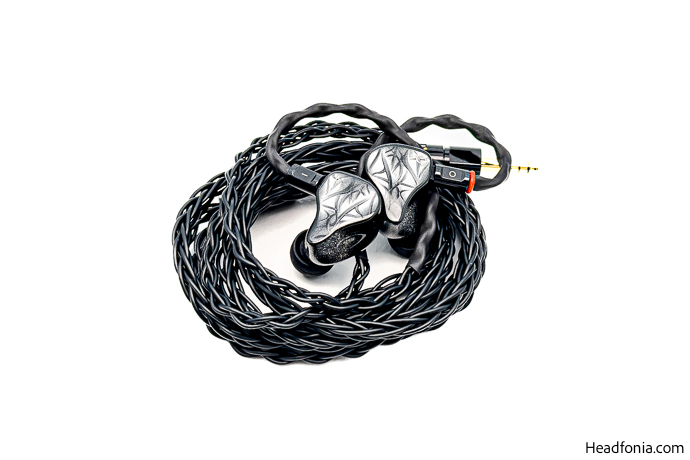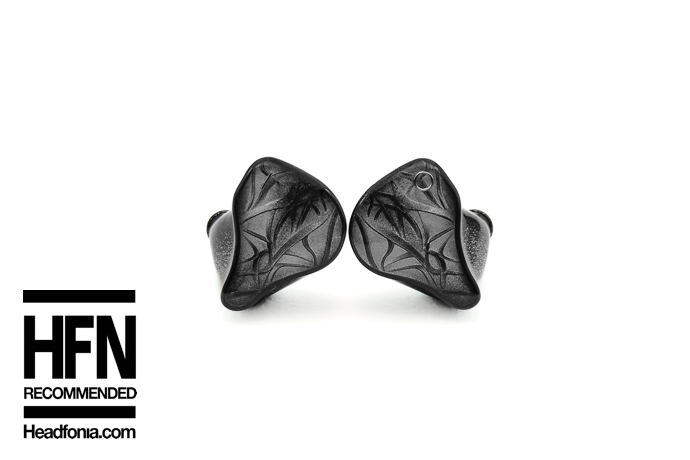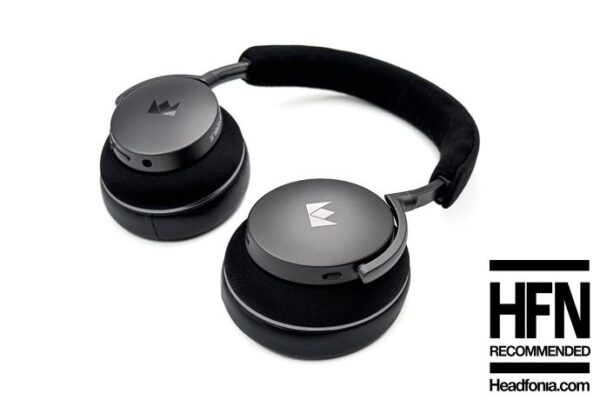If Google is showing you this page directly, click here to go to the start of the article
IO Audio Volare – Sound Impressions
Reference with a slight bass boost is what I would label the Volare. Its signature is easy to like and enjoy as it is controlled both in the top and low end. Its sub-bass is not as extensive as some of the other IEMs, such as the Meteor or Hype 4. One thing to note here is that the bass response of the Volare is HEAVILY dependent on the ear tips. I found out that only half of the included tips work for my ear anatomy. I also tip-rolled a bit and used Divinus Wide and Divinus Regular ear tips. Divinus Wide ear tips provided the most balanced signature for my ear anatomy, while the regular Divinus introduced a bit of warmth just like the stock ear tips named “TT55.” My choice is the ST50, which behaves similarly to SpinFit ear tips, providing a balanced signature. Still, the sub-bass extension was limited here also, so I reverted back to the Divinus Wide ear tips for this review. I used the iBasso D16 as the source and the DX180 as the digital transport for this write-up, along with several dongles, including the Kensei, Onix Alpha, and the iBasso DC07Pro.

Now that the preamble is out of the way let’s get into the details. For starters, I find IO’s approach to the market quite reasonable; this is a tuning that will make many audiophiles happy, especially considering that you are also getting a rich accessory package along with a great cable and a unique-looking IEM. This is an excellent entry into the vast IEM market. Six hundred dollars for this config is competitive, and the Volare delivers; it has a solid technical foundation, great tonal balance, and a signature that is easy to enjoy. Let’s dissect the regions and take a closer look.
Low
Volare’s bass is controlled, fast and snappy with excellent resolution. Its extension is somewhat limited and heavily dependent on the ear tips. However, it delivers once you find the best ear tips for your ears. Don’t get me wrong; it does not reach as deep as Meteor or similar bass-tastic IEMs, but they fail where Volare triumphs: the speed. Volare’s DD bass driver is blazing fast, able to hit and recuperate with agility without bleeding into the midrange, even with congested tracks where there are multiple instruments playing within the stage.
The mid-bass is on the lighter side with adequate body, granting air and spaciousness to the overall signature. It does not feel artificial or thin; it is just a tad light, so I’d not pair it with overly analytical sources with flat/dull bass responses. Warmer sources help its bass reproduction, especially in the mid-bass range. As an example, when a dongle like the UA4 is paired with the Volare, you get a more rounded bass reproduction with more emphasis on the thump and impact. It also pairs very well with the GoBar Kensei, providing a balanced signature from top to bottom. The bass resolution is impressive, and it is able to rival some of the higher-priced IEMs like the Monarch series.

Mid
The midrange on the Volare is reference, linear, and clear. Both male and female vocals are rendered with excellent detail and transparency. It’s not light either; instruments within the midrange are portrayed with a good sense of body and realism. The vocals are perfectly balanced and feel natural. Stringed instrument reproduction is especially fantastic, with excellent detail retrieval, emphasis, and clarity.
The upper midrange is not shouty at all, and that is another highlight of the Volare. It has a very controlled spectrum, especially in the upper midrange / lower treble and the entire treble region. The hi-hats and cymbals have a good presence, and they are not overly done, so you don’t get splashy, all-over-the-place kind of reproduction in the upper midrange. Overall, the midrange is excellent imo, for this price bracket.

High
The treble on the Volare is balanced, pleasantly vivid, and energetic without being sharp or abrasive. The EST-assisted treble region provides an excellent level of detail and clarity, highlighting the nuances while staying very controlled. The high treble (14-15kHz) is audible but shows a recessed presence, which I find great for this tuning as it already nails the fundamentals, so an overly done high treble could have been unappealing for many audiophiles. It perfectly assists the rest of the treble by providing extra air and extension.
The overall extension is great, it is not hot, nor dull, I believe IO wanted a treble that could work with majority of the audiophiles and I have never experienced any shrill with any of my pairings. Overall, I really liked this tuning as it worked with whatever genre I threw at it.
Technical Capability
The Volare stands out in its technical performance, showcasing its prowess with a balanced approach across various aspects. Despite being a newcomer, it manages to deliver an impressive array of technical capabilities that make it a formidable contender in its price range.
The soundstage of the Volare is fairly wide, providing a spacious and airy experience. It does not feel claustrophobic, and its well-done tuning offers ample room for instruments to breathe. The soundstage depth and height are also good, especially with good sources such as iBasso DX180 or DC07Pro.

The imaging is excellent. It’s easy to distinguish different elements in complex tracks. What’s more, the PRaT of the Volare is quite impressive also. The control that I mentioned several times helps a ton here. The Volare feels fast, snappy, energetic and has no issue keeping up with multiple instruments while simultaneously handling a twin-pedal bash passage. This agility is particularly beneficial for the heavy metal and high-bpm electronic genres.
Overall, the Volare performs above its asking price in terms of technical capability. IO has managed to blend an airy presentation with precise imaging, excellent instrument separation, and agile PRaT in a coherent package.
vs. ThieAudio Hype 4 ($399 USD)
The 2DD+6BA Hype 4 offers a balanced sound presentation with a warm-neutral signature, elevated bass, smooth mids, and energetic highs. It is versatile across various music genres, making it a solid all-rounder.
The Hype 4 delivers substantial bass impact and quick recovery, focusing on sub-bass extension, with its dual DD working solely for the subs. It reproduces a deep, impactful bass with good texture and resolution. The Volare, on the other hand, offers a controlled, fast, and snappy bass with also excellent resolution. While the Volare’s sub-bass does not reach as deep as the Hype 4, its speed and agility are slightly superior, providing a clean and snappy bass that hits and recups quickly.
Both IEMs perform well in the midrange, but the Volare provides a slightly more transparent and detailed midrange presentation, especially in the upper midrange. It also feels farther away from the listener when directly compared to the Hype 4, which, in my opinion, is a little more realistic. Also, Hype 4’s male vocals feel a tad more bodied in comparison, but the difference is quite vague.
Both of the IEMs have excellent tunings that are easy-to-like. They both have controlled treble responses, and it was hard to compare them. TLDR is Volare feels more lively and energetic in the lower treble, and Hype 4 feels more expansive in the high treble. I believe it’s an objective tie, but somehow, I like Volare a tad more overall, especially when it reproduces natural instrument sounds. If I had to choose between them, I’d go for Hype 4’s EDM performance and Volare’s instrumental prowess. So, choose based on your genre preference. If you are overly sensitive to treble, you may want to go with the Hype 4 due to its presence region being slightly less forward compared to the Volare. If you want more detail, a more energetic upper midrange, and slightly better technical performance, go for the Volare.

Conclusion
The IO Audio Volare is a well-executed tribrid IEM that offers excellent value at $599. Its premium build quality, rich accessory package, and solid tuning make it a strong contender in the mid-tier IEM market. I definitely recommend the Volare to those looking for a reference IEM with a tasteful bass elevation under $1000.
The Volare is a great option if you’re in the market for a solid IEM that punches above its weight. I am happy to give it our Headfonia Recommended award and add it to the list where we compile the best performers within their price brackets.

Summary
Pros
- Great SQ & easy-to-like tuning
- Excellent build & design
- Terrific unboxing experience
- Good price-to-performance ratio
Cons
- Resin shell is bigger than average
Page 1: IO Audio, Volare, Packaging & Accessories, Design, Build Quality & Fit
Page 2: Sound Impressions, Low, Mid, High, Technical Capability, Comparison, Last Words









Don
Hi,
Did you notice any issue with the low 4.8 ohm impedance of the iem with the 1.1 ohm balanced output of the DX180? Did it sound proper?
Thank you.
Stephen
I’ve been using the Onix Alpha with my Volares on both the SE 3.5mm at 0.4ohm output impedance and the balanced 4.4mm at 0.8ohm and it performs beautifully on both. The soundstage and separation are very tasty with this combo, and I’m currently trying to see if utilizing a separate power bank via the iBasso C19 splitter cable helps.